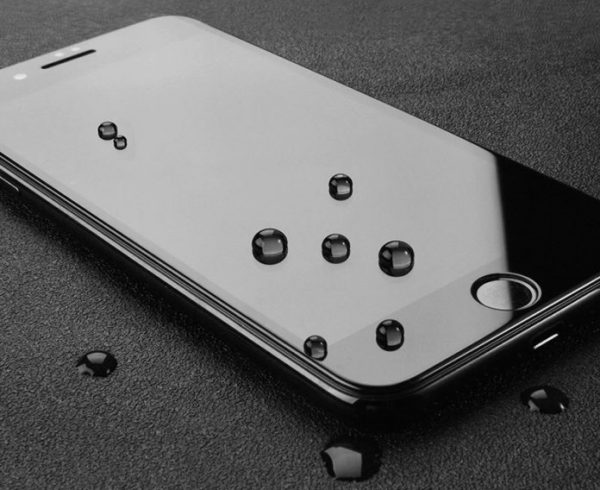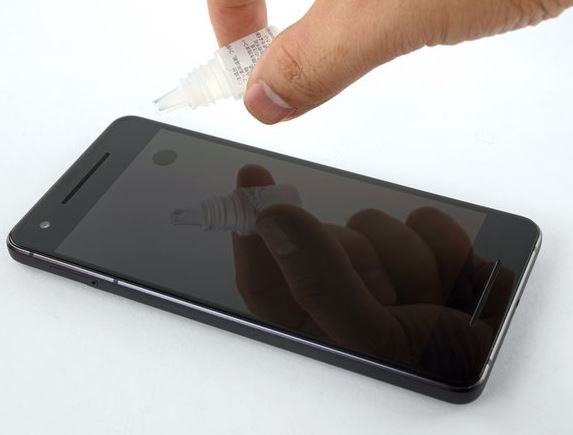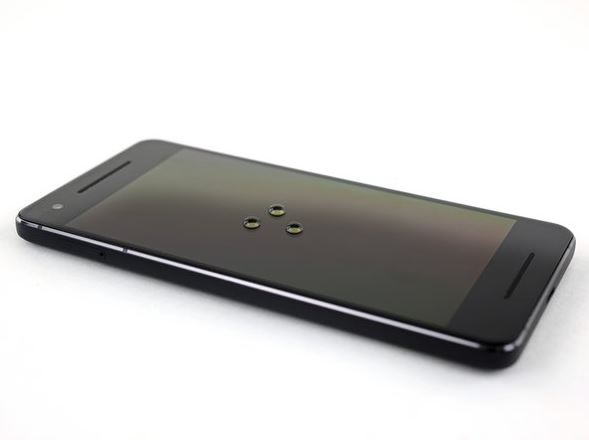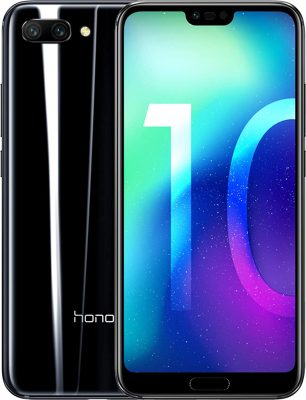If you find yourself troubled by the question of what’s an oleophobic coating, then its time for you to know the importance of this coating especially for your smartphone’s screen. Typically, all modern mobile phones are built with a thin glaze of material that covers their screen surface. It may probably be the reason why you won’t see it described frequently on specific product listings or pages unless the manufacturer is aiming to list for more positive features.
In fact, “oleophobic” is a term used to define a type of material that doesn’t have an affinity to oils. That said, it keeps fingerprint spots off of glass panels or smartphone screens. This coating integration has started in the production of smartphones specifically since the introduction of the iPhone 3GS.
What Does Oleophobic Coating Do?

Oleophobic coating is generally considered as an oil repellent substance or coating. As a result, it doesn’t let oil substance to be absorbed on specific surfaces. A typical oleophobic substance is water; however, this quality can be made on other synthetics with specific treatment processes. The most crucial component of oleophobic coatings is that they can make your smartphones fingerprint-resistant because they repel the oils being produced by your skin.
Most of the time, you’ll find this coating commonly applied to consumer electronic devices and medical supplies. They are used as coat shields, surgical visors, endoscope lenses, and medical tubing. Since the coating is easy to apply, budget-friendly, and doesn’t comprise any of the devices’ functionality, the oleophobic coating has certainly made a name for itself. Not to mention, the outcome is absolutely astonishing.
How Long Does Oleophobic Coating Last?
When you first unbox a new mobile phone, one of the most attractive features is how sleek, smooth, and shiny the screen appears. This has significantly little to do with the absence of scratches and more on the fresh coating of oleophobic treatment that comes with it.
From the first day you begin using your mobile phone, oleophobic coating starts to wear off. Yes, this coating doesn’t last forever. In fact, using a screen protector is the sole method to protect it, as well as using a glass screen protector for additional oleophobic coating since the material itself is built with this solution.
The oleophobic coating affects not only how your smartphone looks but also how it feels. Your fingers easily glide across an all-new screen with convenience and there’s very minimal friction to slow you down. It is also extremely easy to wipe off fingerprints and grease on your mobile phones.
What Are the Benefits of Oleophobic Coating?
As the oleophobic coating wears off, fingerprints tend to linger around longer and need more extensive cleaning. Water or oil that used to roll off or bead up into tiny droplets now lingers on your smartphone’s screens and smears.
To test its effectiveness, simply put a drop of water on your phone’s screen. If it becomes tiny beads and holds together in circles, the oleophobic coating is still performing its job. On the contrary, if the water spreads and moves around the screen in bug drops, the oleophobic coating has already worn off.
Despite its nature, the oleophobic coating isn’t crucial for your smartphone to work. It will just work fine without this coating and your screen won’t get likely to be broken or get scratched. Your screen won’t just feel or look as nice as it did.
If your smartphone is a year to two years old already, you shouldn’t be surprised to discover that the oleophobic coating is entirely worn off or gone. The more you use your smartphone, the faster the oleophobic coating wears off.
How to Apply or Restore Oleophobic Coating?
You might be wondering, can an oleophobic coating be reapplied? Or, can oleophobic coating be applied on tempered glass? We got you covered. While many users tend to opt for a screen protector to preserve this coating, the fact is you can actually restore it easily. All you need is just a few tools and some oleophobic coating kit.
Tools:
- Ziplock Bags
- Isopropyl Alcohol 70% Solution
- Microfiber Cleaning Cloths
Step 1: Clean the Surface

- Use an isopropyl alcohol solution to extensively clean your smartphone’s screen
- Wipe it dry using a clean microfiber cloth
Step 2: Prepare a Wiping Finger
- Wrap your pointer finger in a ziplock bag. For alternatives, you can use a cheaper sandwich bag or plastic wrap.
Note: If you’re wondering, you will use this covered finger to evenly spread the coating liquid onto the phone’s screen. Since oleophobic coating’s solution evaporates quickly when applied to the surface, you’re required to work with it quickly. Covered finger prevents the liquid from absorbing it.
Step 3: Apply Oleophobic Coating to the Screen

- Apply ten drops of oleophobic coating to a larger surface such as a tablet or a larger smartphone. You should work on one portion of the screen at a time.
Step 4: Distribute Evenly
- Wipe your covered pointer finger over the screen with light and quick wipes until the solution evaporates.
- If you’ve dropped the solution to only a specific portion of the screen, repeat the application and rubbing process to the rest of the screen.
Note: You must not rub the screen very hard since you’ll just spread out the coating molecules onto the screen before the solution evaporates.
Step 5: Give the Oleophobic Coating Time to Set

- Once done with the previous steps, you can wipe off any remaining residue on the phone’s screen with a clean microfiber cloth.
- You can repeat the procedure two to three times to fully maximize the oleophobic coating’s film durability and performance.
Note: Avoid touching your screen for eight to 12 hours to allow coating absorption to the surface. For optimum results, apply the oleophobic coating before bedtime so it has the entire night to settle or bond.
If this procedure is performed properly, it provides you with a perfect oleophobic coating on your smartphone. Your smartphone will still collect some fingerprints; however, the oil produced and left behind will be significantly removed and easier to eliminate. You may reapply the oleophobic coating every one to two months or as required.
How to Protect the Oleophobic Coating on Smartphones?
While oleophobic coating wears off eventually through ordinary use, there are a few tips you can do to protect it. The most apparent thing you can do is to not use detergent or abrasive cleaner on your phone’s screen.
These abrasive cleaners include but not limited to the following:
- Bleach or bleach-based cleaning agents
- Crème cleansing agents
- Cutting materials such as t-cut and other polishes
- Detergents such as dishwashing liquid or washing powder
- Windex or other window cleaning agents
Abrasive cleaning agents remove the oleophobic coating completely. Some might even break your phone’s screen or leave it cloudy or blurry. The good news is that there are safe methods you can clean your mobile phones and tablets.
Initially, always begin by wiping your device’s screen with a soft and lint-free cloth. Moisten it with water and wipe off any visible grime and dirt. This is crucial since bacteria and other particles cling to dirt.
To clean your mobile phones, use an alcohol-based cleaning agent that has at least 60% ethanol or 70% isopropanol. Apple suggests you use 70% isopropyl alcohol wipes to disinfect iPads, iPhones, and other touch screen devices. You can apply similar instructions to the latest Android phones made of similar components.
If you want to restore the oleophobic coating to a new-like quality, you can purchase an oleophobic coating kit for cleaning or buy gadget essentials such as glass screen protector or tempered glass for your smartphones.
Oleophobic Coating vs. Gorilla Glass
Knowing the difference between an oleophobic coating and Gorilla glass boils down to comparing what it’s made of. Although they perform a similar role, which is protecting your mobile phone’s screens, these two aren’t entirely made with the same materials.
Display Surface Coating
When it comes to surface coatings, oleophobic coating comes up regularly and is one of the most common coatings for effectively rejecting fingerprints, fluid markings, smudges, and smears on smartphones. These coatings can be produced as transparent films on glass screens, and when integrated on the top surface of a smartphone’s screen, it obviously helps keep your gadgets clean and looking brand-new.
Oleophobic coatings are just the component for covering a touchscreen. As a result, debris and dirt will simply slide off the screen instead of scratching it or digging in.
Tempered Glass
What’s built under these coatings are just as significant as the coatings themselves. Recently, the emergence of a tempered cover glass has become popular. Tempering is the process of using heat cycling and exposure to different chemical components to strengthen and harden a glass. Created by the popularly known Corning Inc., Gorilla Glass is glass created and prepared from a material called Alkali-aluminosilicate, which is developed by bonding oxygen, silicon, and aluminum together. This material is developed to be resistant to scratches and damages and is thin and lightweight.
Kind of Protection
In a nutshell, the oleophobic coating is meant to repel and eliminate fingerprint oils that smudge on your smartphone’s screens, while the Gorilla glass is a scratch-resistant screen protector that protects your screens from cracking, breaking, and even liquid drops depending on the thickness and version.
As a conclusion, we can distinguish the two products as being scratch-proof but shatters easily (Gorilla glass) and being scratch-prone but shatter-resistant (oleophobic coating).
Popular Phones With Oleophobic Coating
Nowadays, the majority of smartphone manufacturers have already integrated oleophobic coatings to reduce and repel fingerprint smudges from making a mess and inconvenience from your screens. As mentioned, this trend started with Apple’s iPhone 3GS and since then, almost all smartphones already have oleophobic coatings for protection.
If you want to know the latest smartphones with an oleophobic coating, here is the list:
iPhone X
Apple’s iPhone X comes with a 5.8” touchscreen display with 1125 x 436-pixel resolution. The screen is protected with a scratch-resistant component – oleophobic coating. It is powered by a Hexa-core processor and comes with a 3 GB worth of RAM.
Get the iPhone X on Amazon now.
The Samsung Galaxy S9+ has a 6.2” touchscreen display with 1440 x 2960 pixel resolution. Its screen is integrated with an oleophobic coating and has added protection from Corning’s Gorilla 5.
Get your hands on the Samsung Galaxy S9+ from Amazon.
OnePlus 6 has a 6.28” touchscreen display with a 1080 x 2280 pixel resolution. Its screen display is protected with oleophobic coating and Corning’s Gorilla Glass 5.
Get the OnePlus 6 on Amazon now.
Vivo V9
Vivo V9 has a 6.3” touchscreen display with a 1080 x 2280 pixel resolution. This phone comes with a 2.2 GHz Octa-core processor and also with a built-in 4 GB RAM. Vivo V9 has an overall front glass and aluminum body at the rear part to protect your phone against fingerprint smudging and scratches.
Get the Vivo V9 on Amazon now.
The Honor 10 has a 5.84” touchscreen display with a 1080 x 2280 pixel resolution with a PPI of 423 pixels/inch. Moreover, it is powered by a 1.8 GHz Octa-core processor and also comes with 6 GB worth of RAM. It has a multi-touch display protected by oleophobic coating and Corning’s Gorilla Glass.
Get your own Huawei Honor 10 on Amazon.
Nokia 7+
Nokia 7+ has a 6” touchscreen display with a 1080 x 2160 pixel resolution. It protects the screen with an oleophobic coating and Gorilla Glass 3 powered by Corning. It runs on an Octa-core processor and has a built-in 4 GB RAM. Nokia 7+ comes with 64 GB worth of internal storage but can be expandable to 256 GB via a microSD card.
Get the Nokia 7+ on Amazon now.
There you go – a comprehensive and simplified guide on all there is to know about the oleophobic coating. Do you have any preferences when it comes to protecting your screens from smudges and scratches? Do you prefer purchasing an oleophobic coating cleaning kit, or buying a tempered glass such as the Gorilla glass instead? We would love to hear your thoughts and feedback! You may contact us anytime or leave a comment below!






